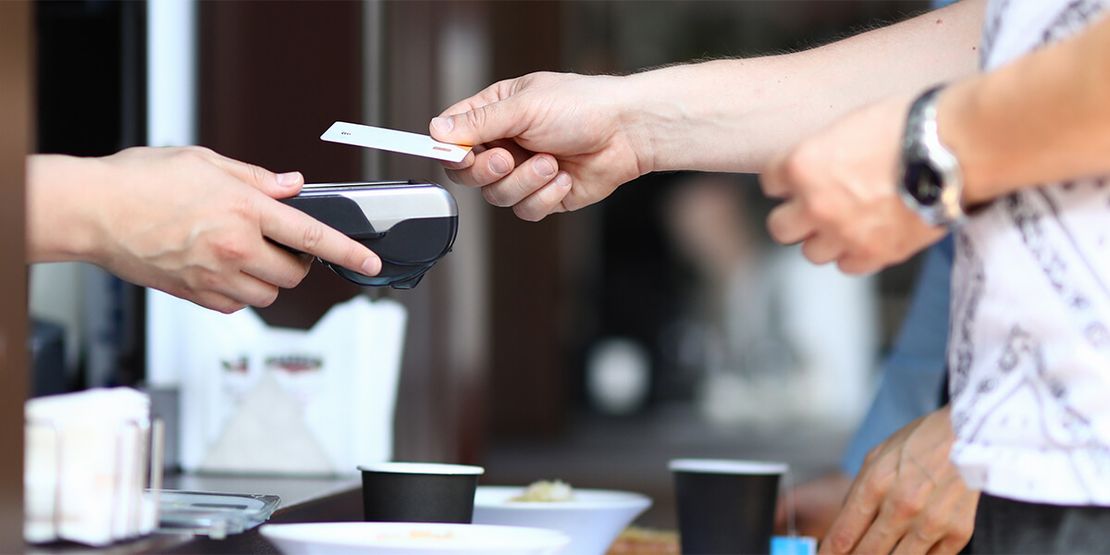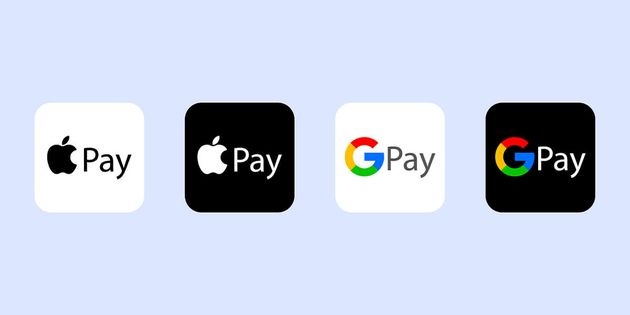Transit Solutions: Rabbit Card vs Octopus Card - Which One Suits You Best?
In the bustling metropolis of Krung Thep Maha Nakhon (Bangkok), efficient transportation is paramount, and the Octopus and Rabbit cards stand as stalwarts in this area.
With its widespread acceptance and versatility, the Octopus card offers a seamless payment experience across Southeast Asian cities. Conversely, the Rabbit card caters to Bangkok's intricate transit system, providing locals and tourists with a convenient means of navigating the urban landscape.
Join us as we delve into the nuances of these transit solutions, uncovering their strengths and nuances to help you determine which best suits your needs. Let's begin this journey together and find the perfect transit companion for your adventures in Bangkok.
🚀 Expat Fact:
The number of card payment transactions in Thailand in 2022 was estimated at 224.7 million.
Octopus vs. Rabbit Cards: Which is Right for You?
In the following sections, we'll compare the Octopus and Rabbit cards, helping you choose the perfect transit solution for your time in Thailand.
Acquiring Your Transit Card
Procuring your Rabbit card is a breeze at any BTS station in Bangkok. Opting for online purchases and Suvarnabhumi Airport pickup offers a cost-effective and time-efficient option for maximizing your Bangkok experience. Alternatively, travelers can obtain a Rabbit card at the RTC City Bus counter at Chiang Mai International Airport or aboard the Smartbus departing from Phuket International Airport.
For the Octopus Card, visit designated service centers such as the MTR Customer Service Center, the Airport Express Customer Service Center, or Customer Service Centers operated by public transit companies.
Pricing Comparison
In Thailand, the Rabbit Card is priced at 200 Baht, which includes 100 Baht in fees and an initial stored value of 100 Baht. Alternatively, travelers can pre-purchase Rabbit Cards online for 290 Baht.
The Octopus Card's price is 150 Baht, which covers a 100 Baht top-up value for transportation and a 50 Baht deposit. The deposit is refunded upon returning the card. Additionally, special rates of 70 Baht are available for children under 3 and seniors over 65.
Payment Method
Both the Octopus and Rabbit Cards offer seamless and user-friendly payment experiences. To make a payment with the Octopus card, hold it up to or within a few millimeters of an Octopus card reader. The reader will emit a beep to confirm the transaction and display the deducted amount and the remaining balance. Transaction times typically range from 0.3 to 1 second, depending on whether the reader is used for retail businesses or public transportation.
Using the Rabbit Card is equally straightforward. Just touch the card on the scanner at the entrance gate of the BTS station to gain entry. The fare will then be automatically deducted from your card balance, with the remaining balance displayed. Tap your card on the reader at any BTS station ticket counter to check your balance.
Enhanced Security Features
The Octopus card system employs robust security measures, utilizing the ISO 9798-2 three-pass mutual authentication protocol to ensure mutual authentication between the card and the reader. Each transaction is encrypted, and authorization only occurs after exchanging secret access keys and mutual confirmation of identities. This stringent security protocol safeguards against unauthorized access, with fail-safe mechanisms to prevent multiple cards from initiating transactions. However, it's imperative to safeguard the access key to maintain system integrity.
Similarly, the Rabbit Card offers a secure and reliable cashless payment platform, employing encryption technology to protect transactions. Utilizing password and two-factor authentication adds a layer of security to card payments. With these advanced security features, the Rabbit and Octopus cards provide peace of mind for users conducting transactions in Bangkok and Thailand.
Balance Inquiry
Verifying your account balance on the Octopus and Rabbit cards is straightforward and convenient. With the Octopus card, you can easily monitor your balance by checking the amount deducted and the remaining balance after each transaction. This information is displayed on the card reader, allowing for quick reference.
Octopus card users can also access balance inquiries and transaction history at MTR stations through value machines, Octopus Service Points, or the Octopus app on their phones. These platforms provide comprehensive insights into recent transactions and balance details, ensuring transparency and ease of management.
Similarly, checking the balance on your Rabbit Card is effortless. Touch the card on the scanner at the entrance gate of the BTS station to access your balance. The fare will be automatically deducted, and the remaining balance will be displayed.
For additional convenience, Rabbit cardholders can inquire about their balance via SMS or the app. With multiple options available, users can stay informed about their balance status and manage their accounts efficiently.
Card Refill Methods
Refilling your Rabbit card is convenient and accessible across various locations in Bangkok. You can top up your card at any BTS station counter, Tesco Lotus minimart, participating McDonald's, or food court that accepts Rabbit pay. The minimum reload amount is 100 Baht, with increments of 100 Baht up to a maximum of 4,000 Baht. You'll need to present identification for the initial top-up, but subsequent top-ups won't require this step.
To replenish your Octopus Card, visit any BTS ticket office or authorized top-up service provider displaying the "top up" sign. Your funds will be swiftly transferred to the card's stored value, enabling seamless transactions at participating merchants.
Additionally, you can add money using your bank account, Octopus Wallet, or a designated bank app. Simply specify the desired top-up amount, and for added convenience, tap your Octopus Card on a compatible NFC-enabled device to complete the transaction.
In the event of any issues during a bank account top-up, the money will be transferred and credited to your Octopus Wallet, ensuring a hassle-free experience. Upon successful top-up, a transaction receipt will be provided for your records.
Deals and Discounts
The Rabbit card emerges as the frontrunner for securing deals and discounts. Cardholders enjoy regular special discounts and incentives at restaurants and businesses across Bangkok. Savings opportunities range from ten to fifteen percent on popular items like coffee, doughnuts, and hamburgers.
To unlock even more benefits, Rabbit cardholders can register for "Rabbit Rewards" through the dedicated mobile app available for Android and iPhone devices. Users can access exclusive promotions and rewards by linking their credit cards to the app.
Moreover, patrons of the Siam Paragon Mall in the heart of Bangkok are entitled to a 150 Baht discount on Sea Life aquarium admission tickets. Home to Southeast Asia's largest indoor aquarium, Sea Life offers a tranquil respite from shopping adventures.
On the other hand, Octopus cardholders enjoy discounts when using Cityflyer Routes for travel to or from the airport, receiving 50% off their return trip if completed on the same day. Additionally, on-loan Octopus cards feature fare concession rules benefiting children under eleven and elderly individuals over sixty, who can access public transportation at reduced rates.
Validity Period
Regarding validity, the Rabbit card outshines the Octopus card's longer lifespan. Your Rabbit Card remains valid for an impressive 7 years from the date of issuance. This extended validity period ensures that you can rely on the same card for multiple visits to Bangkok without the hassle of purchasing a new one. Plus, your saved value remains intact throughout the card's lifespan, offering added convenience and continuity for frequent travelers.
In contrast, the Octopus card has a shorter validity period and may become inactive if left unused for an extended period. Reactivating an inactive Octopus is a simple process for Android smartphones with NFC capability. By placing the Octopus near the NFC area of your phone or tapping "Enquiry" for the Octopus Mobile SIM, you can check its current status and choose to reactivate it.
Octopus cards are deactivated after 1,000 days of inactivity, but reactivation is free of charge and can be done at any customer service center at an MTR station.
Card Limitations
While both the Rabbit and Octopus cards offer convenient transit solutions in Bangkok, each has drawbacks.
A notable limitation of the Rabbit Card is its incompatibility with the MRT subway and Bangkok Airport Link trains. This means passengers must resort to alternative payment methods when using these transportation networks, detracting from the card's overall convenience. Additionally, there is an initial issuance fee of 100 Baht, which may deter some users.
On the other hand, one drawback of the Octopus card is the inability to recover any funds if the card is lost or stolen. This poses a risk to users, as any money stored on the card cannot be refunded in such instances.
While both cards offer valuable benefits, understanding their limitations can help travelers decide which card best suits their needs and preferences in navigating Bangkok's transportation network.
Card Care Guidelines
Proper handling and care of your transit card are essential to ensure smoother transactions and the protection of your funds. Here are some precautions to consider for both the Rabbit and Octopus cards:
- Avoid Multiple Cards
- It's not advisable to hold several Octopus cards or multiple contactless smart cards over an Octopus scanner simultaneously.
- Doing so may cause interference and disrupt transactions.
- Handle with Care
- For both cards, refrain from bending, writing on, scratching, tapping, cutting, or attaching stickers, images, or other accessories to your card.
- Any damage to the card may result in transaction failures, and any remaining funds may not be refundable.
🚀 Expat Trivia
Almost 25% of all e-commerce payments in Thailand in 2022 were made using cards, proof of the continued popularity of this payment method.
Choosing Your Transit Companion
After examining the features and limitations of both the Octopus and Rabbit cards, it's clear that each offers unique advantages for travelers in Bangkok and beyond.
The Rabbit card serves as a versatile payment option for visitors and locals alike, providing convenience for shopping and transit fares within Bangkok. With its widespread acceptance and user-friendly interface, the Rabbit card is an excellent choice for those seeking seamless transactions during their stay in Thailand's capital.
Conversely, the Octopus card appeals to travelers who value consistency and convenience across various Southeast Asian destinations. Its widespread acceptance and transaction benefits make it a valuable tool for seamless travel experiences.
Ultimately, the choice between the Octopus and Rabbit cards depends on your preferences and travel itinerary. Whether you prioritize versatility, widespread acceptance, or specific transaction benefits, both cards offer valuable features to enhance your travel experience in Thailand and beyond.
Bookmark this article for future reference as you navigate electronic card options for your Southeast Asian transactions.
Lifestyle Bear
More From The Bear World
Using Rabbit Card in Bangkok: A Guide for Convenient Travel
Lifestyle Bear
Moving to Bangkok Guide: Everything You Need to Know
Lifestyle Bear


























